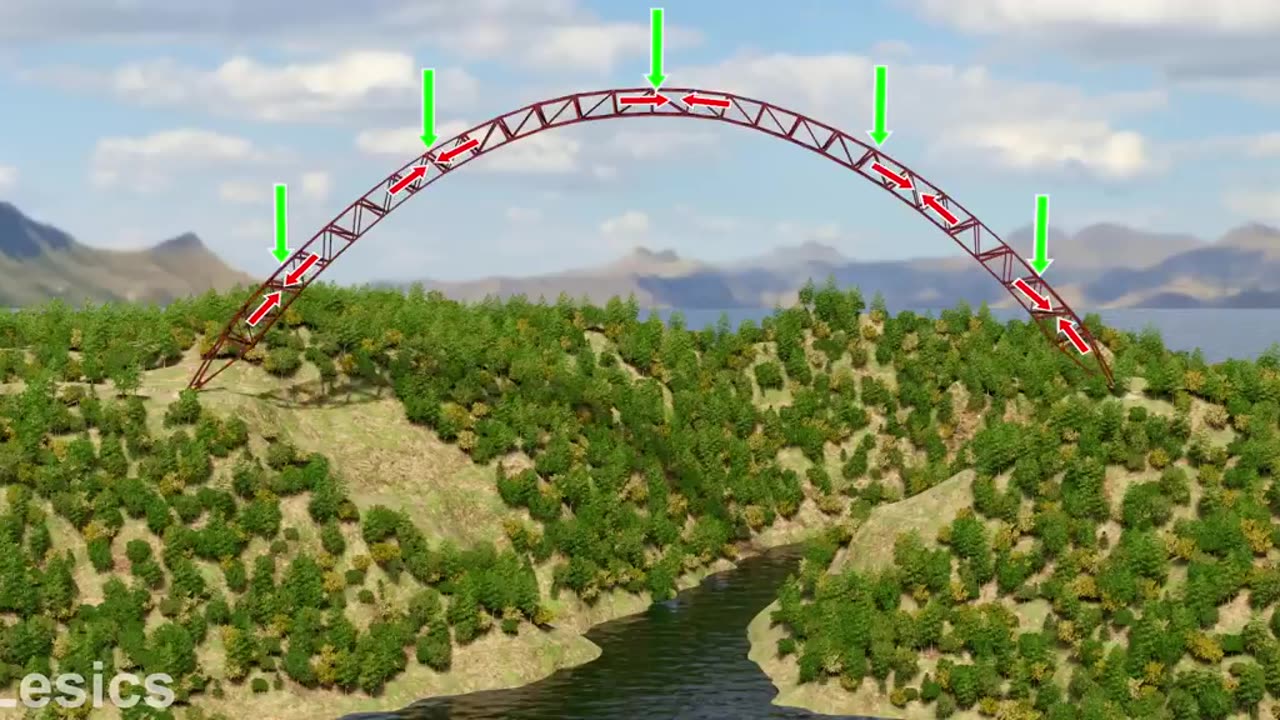Premium Only Content

the beautiful engineering
A bridge is a structure designed to span physical obstacles such as rivers, valleys, or roads, providing a pathway for transportation or pedestrian use. The field of engineering that focuses on the design, construction, and maintenance of bridges is known as bridge engineering. Bridges play a crucial role in connecting different regions, facilitating the movement of people and goods.
Here is a brief description of the key components and considerations in bridge engineering:
Types of Bridges:
Beam Bridges: Simplest form with horizontal beams supported at each end.
Truss Bridges: Consist of interconnected elements forming triangular units for added strength.
Arch Bridges: Employ arches for support, distributing weight and stress.
Suspension Bridges: Feature towers and cables supporting the bridge deck.
Cable-Stayed Bridges: Similar to suspension bridges, but cables attach directly to the towers.
Materials Used:
Steel: Common for its strength and flexibility, especially in truss and suspension bridges.
Concrete: Offers durability and versatility, often used in various bridge types.
Wood: Traditional material, still used in some pedestrian or historical bridges.
Composite Materials: Combining different materials for enhanced performance.
Structural Components:
Superstructure: The part of the bridge that supports the load, including the deck and main supporting members.
-
 56:48
56:48
The HotSeat
12 hours agoI'm NOT Sorry! Guns Aren’t the Problem—Godless Culture Is
26.1K29 -
 9:43
9:43
The Pascal Show
13 hours ago $0.05 earnedWHOA! Annunciation School Sh**ter Identified... Heartbreaking & Insane
1122 -
 22:42
22:42
Liberty Hangout
8 hours agoCollege Democrats Say Gangs Are GOOD!
47.3K60 -
 2:14:50
2:14:50
Badlands Media
13 hours agoBadlands Media Fantasy Football Live Draft
40.2K -
 2:12:29
2:12:29
Inverted World Live
7 hours agoWe Are Time Travelers | Ep. 100
79.8K13 -
 2:57:09
2:57:09
TimcastIRL
7 hours agoCorporate Press Refuses To Mention Minneapolis Shooter Was Trans | Timcast IRL
187K101 -
 5:26:57
5:26:57
Akademiks
6 hours agoWar in RAT-LANTA. Young Thug vs Gunna vs Ralo vs YSL MONDO. Who Will Le Bebe Pick. FINAL CRASHOUT!
54.5K4 -
 1:02:24
1:02:24
Man in America
10 hours agoThe Final Battle: Nanotech, Transhumanism & the War for Your Soul w/ Dr. Ed Group
44.8K6 -
 39:56
39:56
Sarah Westall
5 hours agoUpcoming World Wide Economic Collapse/Deep Recession & What the Big Money is Doing w/ Ed Dowd
41.2K5 -
 2:52:55
2:52:55
Barry Cunningham
6 hours agoIT'S MOVIE NIGHT WITH BARRY!
48.7K29